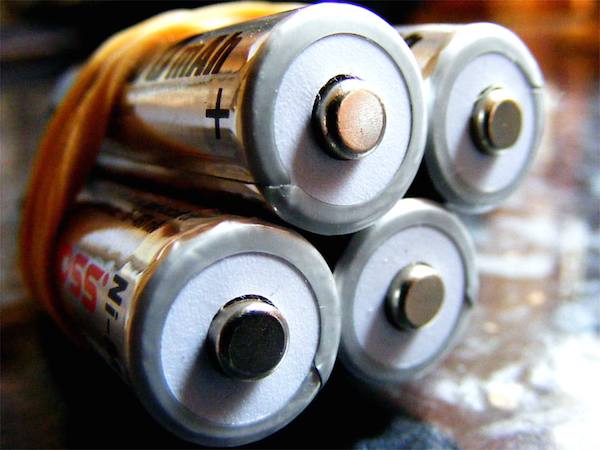
[Image above] Credit: Rob Nunn; Flickr CC BY 2.0
Batteries are one of the top five hottest fields in scientific research right now. So it’s no wonder that there’s a constant stream of new battery research coming across my news feed.
According to Battery University, a 2009 global battery market report put revenue figures at $47.5 billion, with predictions that the market would reach $74 billion by this year. That’s a whole heck of a lot of batteries, and a whole heck of a lot of money.
But there’s still a lot of room to go before the ubiquitous battery of today can meet tomorrow’s high energy demands. We need better batteries to take more power from fossil fuels, particularly in automobiles.
Researchers at ETH Zurich are among the many who are looking for new materials that can make better batteries for tomorrow’s energy needs. Unlike others, however, their new candidate threatens to shatter the competition.
The team has found that vanadate–borate glass (made of vanadium pentoxide and lithium metaborate) coated with graphite oxide can make better cathodes that may be able to double battery capacity. Most lithium-ions used today have cobalt–oxide cathodes, which were invented by this guy.
An ETH Zurich press release explains the challenge with vanadium oxide in the new cathodes.
“In crystalline form, vanadium pentoxide can take three positively charged lithium ions—three times more than materials presently used in cathodes, such as lithium iron phosphate. However, crystalline vanadium pentoxide cannot release all of the inserted Li-ions and only allows a few stable charge/discharge cycles. This is because once the lithium ions penetrate the crystalline lattice during the loading process, the lattice expands. As a result, an electrode particle swells as a whole, i.e., it increases in volume only to shrink again once the charges leave the particle.”
To overcome these challenges of an otherwise promising material, researchers were inspired by the amorphous—they made the material into a glass, bypassing the crystal lattice problems altogether.
ETH Zurich scientists melted vanadium pentoxide and lithium metaborate powders at 900°C and rapidly cooled the material to form glass in thin sheets. Crushing the sheets into a fine powder provided a material with a lot of surface area and more pore space.
The team then coated the powder with graphite oxide, forming a protective layer with an added bonus of increased conductivity. Adding graphite oxide significantly increased the electrodes’ stability from 30 to 100 charge/discharge cycles—an important component of battery life and performance.
According to the release, “One battery with an RGO-coated vanadate-borate glass electrode exhibited an energy density of around 1000 watt-hours per kilogram. It achieved a discharge capacity that far exceeded 300 mAh/g. Initially, this figure even reached 400 mAh/g, but dropped over the course of the charge/discharge cycles.”
According to lead author Semih Afyon, a scientist at ETH Zurich’s Electrochemical Materials Institute, “This would be enough energy to power a mobile phone between 1.5 and two times longer than today’s lithium-ion batteries.”
The researchers are continuing to explore the glass and are collaborating with partner company Belenos to patent the material.
The paper, published in Scientific Reports, is “New high capacity cathode materials for rechargeable Li-ion batteries: Vanadate-borate glasses” (DOI: 10.1038/srep07113).
Still have the attention to power through more battery research?
- Check out how researchers at the University of Michigan are pioneering bulletproof batteries that incorporate a safety-enhancing Kevlar barrier between battery electrodes; or
- Discover how researchers at the University of Alabama in Huntsville are investigating new nanomaterials that can make electric car batteries lighter, smaller, and longer-lasting.
